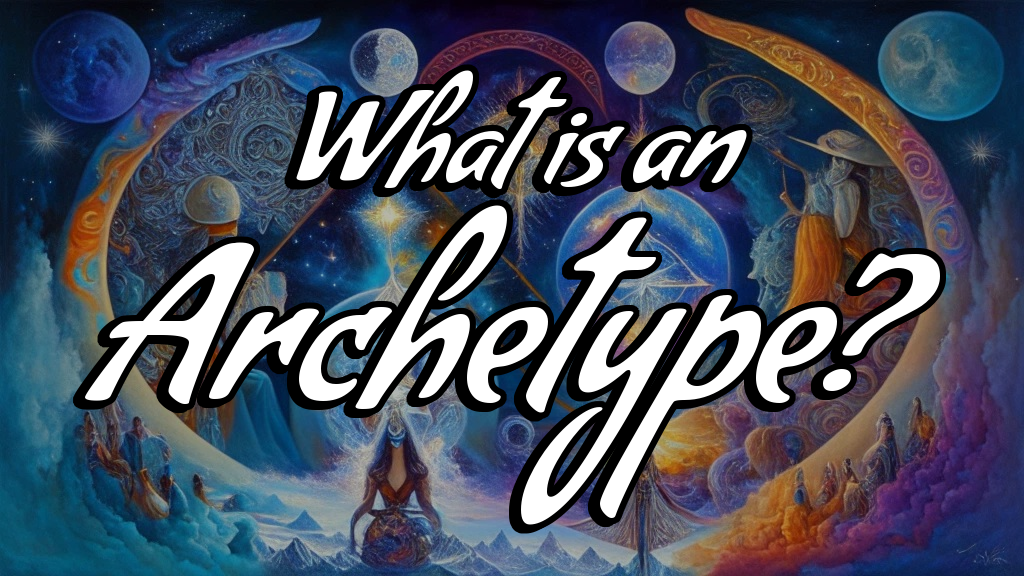Throughout history, human beings have been fascinated by the stories and myths that shape our understanding of the world and ourselves. These narratives often follow patterns and themes, which can be traced across different cultures and societies. These patterns, known as archetypes, can be observed in literature, art, and even within our own personal development. By exploring the world of archetypes, we can gain a deeper understanding of ourselves and the societies we live in, while also fostering personal growth and societal progress.
Archetypes hold both cultural and universal significance, influencing the way we perceive and interact with the world around us. They inform our values, beliefs, and expectations, serving as a blueprint for human experience. In this article, we will delve into the fascinating world of archetypes, examining their origins, meanings, and impact on our lives.
Defining archetypes: Cultural and universal patterns
The term archetype, originating from the Greek words arché (meaning “first”) and typos (meaning “imprint” or “pattern”), refers to a recurring symbol, theme, or motif that is present across different cultures and societies. These archetypal patterns can be found in various forms, such as myths, legends, and art. They often represent universal human experiences and emotions, such as love, fear, and the search for meaning.
Archetypes can be both cultural and universal, reflecting the values and beliefs of a specific society while also resonating with individuals across different cultures. For example, the concept of the hero is a common archetype that can be observed in stories from various traditions. While the specific characteristics of the hero may vary from culture to culture, the underlying theme of an individual overcoming adversity to achieve personal growth is a universal human experience.
The role of archetypes in personal development
Archetypes play a significant role in our personal development, as they provide a framework for understanding and processing our experiences. By identifying with a particular archetype, we can gain insight into our own strengths, weaknesses, and potential for growth. This process of self-discovery can be empowering, allowing us to understand ourselves on a deeper level and make more informed choices in our lives.
For example, one might identify with the archetype of the warrior, embracing the qualities of courage, discipline, and determination. By recognizing these traits within ourselves, we can work to develop and strengthen them, ultimately becoming more resilient and adaptive in the face of challenges.
In addition to individual growth, archetypes can also foster a sense of interconnectedness and unity among people. By recognizing the shared human experiences represented by archetypes, we can cultivate empathy and understanding for others, transcending cultural and societal boundaries.
Carl Jung and the concept of the collective unconscious
Swiss psychiatrist Carl Jung was a pioneer in the study of archetypes and their impact on human psychology. He believed that archetypes are part of the collective unconscious, a shared reservoir of human experience and knowledge that exists beyond our individual consciousness. According to Jung, the collective unconscious is inherited, rather than learned, and serves as a source of universal symbols and motifs that influence our thoughts, feelings, and behaviors.
Jung’s theory of the collective unconscious and archetypes has had a profound impact on the fields of psychology, anthropology, and cultural studies. His work has inspired countless researchers and practitioners to explore the depths of human experience, resulting in a greater understanding of the cultural and universal patterns that shape our societies.
Archetypal symbols and their meanings in various cultures
Archetypal symbols are powerful representations of the human experience, often appearing in the form of images, themes, or motifs. These symbols can be found in various cultural and artistic expressions, from ancient cave paintings to modern films and literature. By examining the meanings and interpretations of these symbols across different cultures, we can gain insight into the shared experiences and emotions that unite us as human beings.
For example, the serpent is a common archetypal symbol that appears in numerous mythologies and religious traditions. In some cultures, the serpent represents wisdom, transformation, and healing, while in others, it symbolizes temptation, danger, and chaos. By exploring the various meanings associated with the serpent archetype, we can better understand the complexity and depth of human experience, as well as the cultural differences that shape our perceptions.
The impact of archetypes on societal norms and values
The influence of archetypes extends beyond our individual lives, shaping the norms and values of our societies. By providing a framework for understanding human experience, archetypes inform our beliefs, expectations, and behaviors. This can be observed in the various customs, rituals, and institutions that are present across different cultures, all of which serve to reinforce and perpetuate archetypal patterns.
For example, the archetype of the wise elder can be seen in the reverence and respect afforded to elders in many societies. This archetype represents the accumulation of knowledge, wisdom, and experience that comes with age, and serves as a reminder of the importance of learning from the past. By incorporating this archetype into our societal values, we encourage the transmission of knowledge between generations and promote the development of a more thoughtful and reflective society.
Archetype examples in literature, film, and art
Archetypes can be found in various forms of artistic expression, from classic literature and mythology to contemporary films and visual art. These archetypal patterns serve to resonate with audiences on a deep, subconscious level, eliciting powerful emotional responses and fostering a sense of connection and understanding.
In literature, archetypes can be observed in the characters, themes, and narratives that recur across different genres and time periods. For example, the hero’s journey, a common narrative structure, follows the adventures of a protagonist who embarks on a quest, faces challenges, and ultimately returns home transformed. This archetypal pattern can be found in countless stories, from ancient myths like the Epic of Gilgamesh to modern novels like The Lord of the Rings.
Similarly, archetypes are present in the world of film and art, often serving as a source of inspiration and meaning for both creators and audiences. For example, the mother figure is a common archetype in visual art, symbolizing nurturance, protection, and unconditional love. This archetype can be found in various forms, from the Virgin Mary in Christian iconography to the Earth Mother in indigenous art.
The role of archetypes in modern psychology
Archetypes continue to play a significant role in modern psychology, particularly in the field of depth psychology, which focuses on the exploration of the unconscious mind. By examining the archetypal patterns that shape our thoughts, feelings, and behaviors, psychologists can gain insight into the underlying motivations and desires that drive human behavior.
In addition to Jung’s work on the collective unconscious, other psychologists have developed their own theories and approaches to understanding archetypes. For example, Joseph Campbell’s monomyth theory examines the universal narrative structure found in myths and stories from various cultures, while James Hillman’s archetypal psychology focuses on the unique ways in which archetypes manifest in the individual psyche.
By applying the principles of archetypal psychology in therapy and self-exploration, individuals can gain valuable insights into their own personal development and growth, leading to greater self-awareness and emotional well-being.
Exploring archetypal patterns in personal and professional life
Recognizing and understanding the archetypal patterns that influence our lives can be a powerful tool for personal and professional growth. By examining the roles, relationships, and experiences that shape our identities, we can uncover the underlying archetypes that inform our beliefs, values, and behaviors.
In our personal lives, this process of self-discovery can lead to greater self-awareness, allowing us to make more informed decisions and cultivate meaningful connections with others. In our professional lives, an understanding of archetypes can help us navigate complex workplace dynamics, develop effective communication strategies, and foster a more inclusive and empathetic work environment.
By embracing the power of archetypes, we can gain a deeper understanding of ourselves and the world around us, ultimately leading to greater personal growth and societal progress.
Final thoughts: Understanding and embracing archetypes for personal growth and societal progress
The exploration of archetypes offers a fascinating and profound journey into the depths of human experience, revealing the cultural and universal patterns that shape our lives. By understanding and embracing these archetypal patterns, we can foster personal growth and societal progress, transcending cultural and societal boundaries to cultivate empathy, compassion, and understanding.
As we continue to explore the world of archetypes, we are reminded of the powerful and transformative potential of human imagination and creativity. By harnessing the power of these universal patterns, we can create a more inclusive, empathetic, and resilient society, capable of overcoming the challenges and uncertainties of our rapidly changing world.
Ready to discover your own personal archetypes and unlock the secrets of your unique path to growth and fulfillment? Click here for a FREE, personalized archetype reading, and begin your journey of self discovery today!





